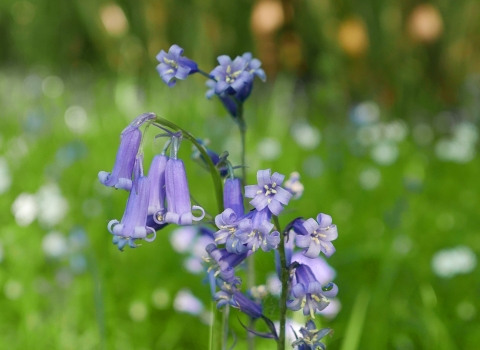Wildlife Sites in Northamptonshire are known as Local Wildlife Sites (LWS). Northamptonshire has approximately 737 of them forming a network of natural sites across the county but covering just 5.15% of the county.
Habitats & Locations
- Woodlands; such as the ancient woodlands across the Rockingham Forest and Yardley - Whittlewood Ridge
- Grasslands; including species rich meadows found particularly in west of the County and along river valleys, acid grasslands around Daventry and calcareous grassland in northeast Northants
- Gravel pits and wetlands; many in the Nene Valley but also along other river valleys and reservoirs
- Quarries and gullets; associated with old ironstone works in north Northants and now providing a range of wildlife habitats
- Roadside verges & green lanes; which are both important habitats and wildlife corridors and make it possible for threatened species to move from one site to another.
The Wildlife Sites system
Local Wildlife Sites (LWS) are chosen based on their conservation value and are assessed against a publicly available county-based set of criteria. The aim is to select a comprehensive (rather than representative) set of locally important sites for wildlife. Sites qualify if they provide good example of a habitat or support populations of indicators species above a certain threshold. They do not have statutory protection and it is through the goodwill of their owners and managers that the sites are conserved and retain their wildlife value.
In Northamptonshire the Wildlife Sites system is managed by the Wildlife Trust on behalf of the Wildlife Sites Partnership, which includes local authorities, statutory conservation agencies, local naturalists, and landowners. The partnership oversees, coordinates, and develops the system for identifying and conserving sites in Northamptonshire, as well as selecting and de-selecting LWS.
What we are doing in Northamptonshire
Our Wider Countryside team record all the Local Wildlife Sites (LWS) and run a monitoring programme that aims to visit each site on a rolling basis. This allows us to find out what wildlife is currently on or using the site. We offer free advice on the most wildlife friendly options for a site's management and information on the species to be found, as well as help and information on sources of funding for conservation-friendly management.
If you own a LWS or think you have a site that qualifies please contact Gavin Bennett, Senior Conservation Officer at gavin.bennett@wildlifebcn.org for management and survey advice.
Projects
Farming for the Future: Oundle Snipe Meadow, a LWS designated for wetland plant species, was advised to implement conservation grazing to keep coarser plant species from dominated the site. Farming for the Future, a grant scheme run by the Wildlife Trust, helped to fund fencing, cattle pasture pumps, and an interpretation board. This meadow is now able to have livestock safety on site, grazing and ensuring the flora biodiversity remains.
Bulwick Estates: This 1750ha estate started a conservation project in 2023. The Wildlife Trust surveyed an old quarry workings ‘Shotley Quarry’ the year before, selecting it as an LWS, and recommended spring and winter grazing and scrub clearance to allow the rare chalk specialist plant species to flourish. Bulwick Estates secured funds to spend 12 weeks with a mini-digger and flail reducing the scrub cover in Shotley Quarry to secure their most species-rich ground flora and invertebrate community.
Volunteer Grassland Assessments: In the summer of 2024, the Wildlife Trust undertook assessments targeting grasslands in unsurveyed or long-unvisited private sites within Northamptonshire to determine their suitability for Local Wildlife Site status. We had 28 volunteers survey 70 sites, with positive indicator finds such as Fen Bedstraw, Harebell, and Orchid species amongst others. While only a small number of these sites showed significant potential for Local Wildlife Site designation, the surveys provided invaluable insight into the current state of these grasslands. This information will help us work closely with landowners and continue to monitor and collaboration to safeguard Northamptonshire's remaining wildlife-rich areas. Look out for further projects in our Conservation enews if you want to get involved.
Habitat management
Coming soon...

